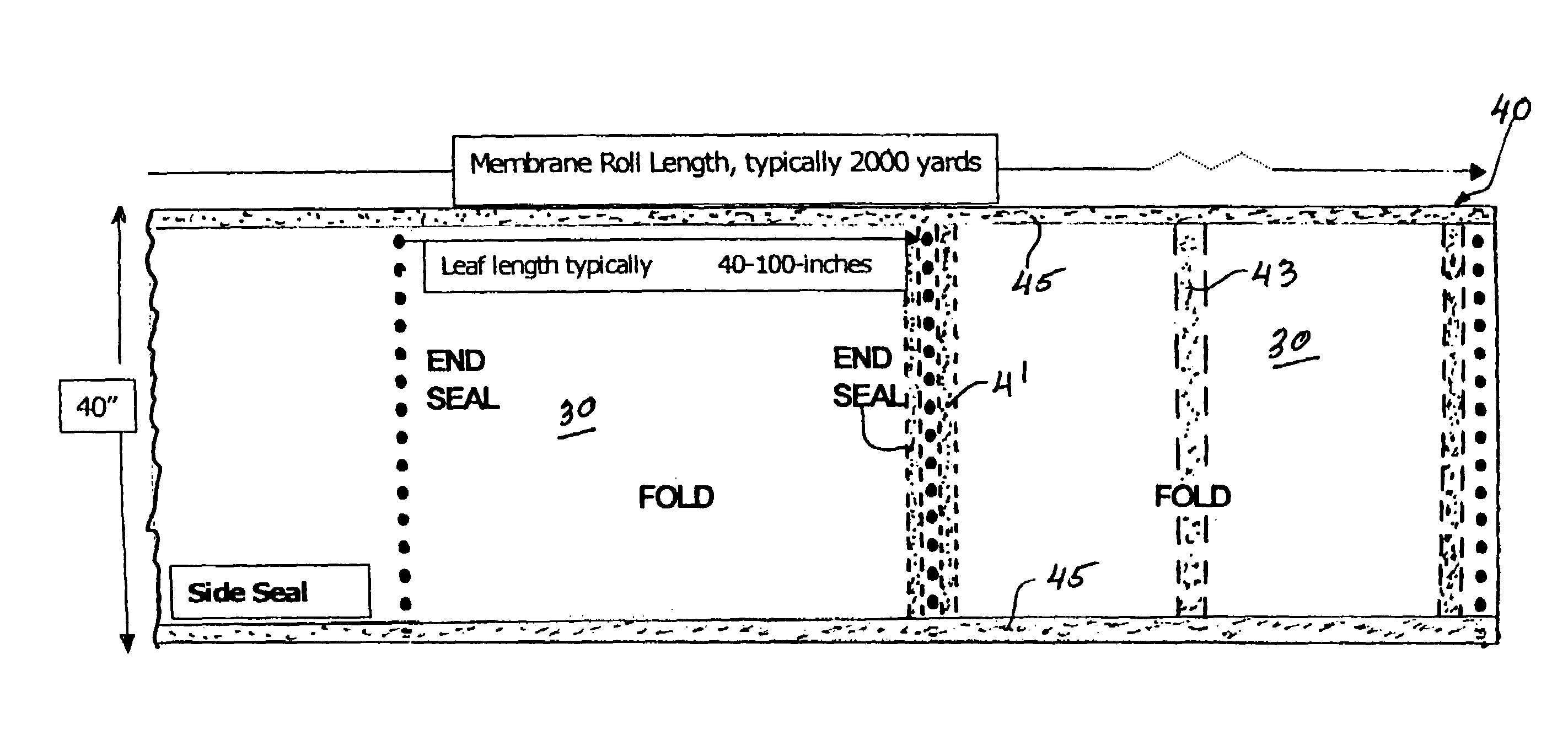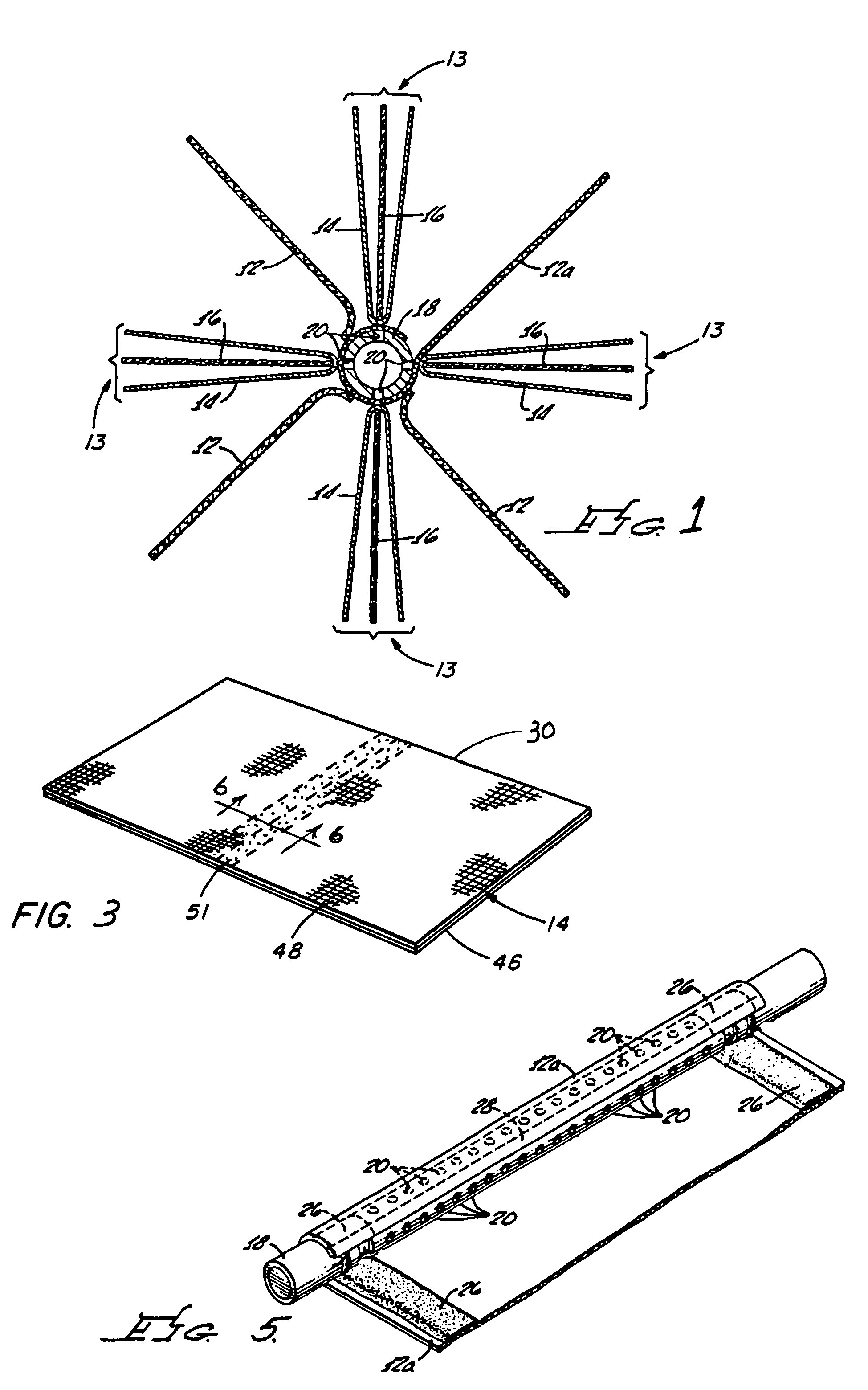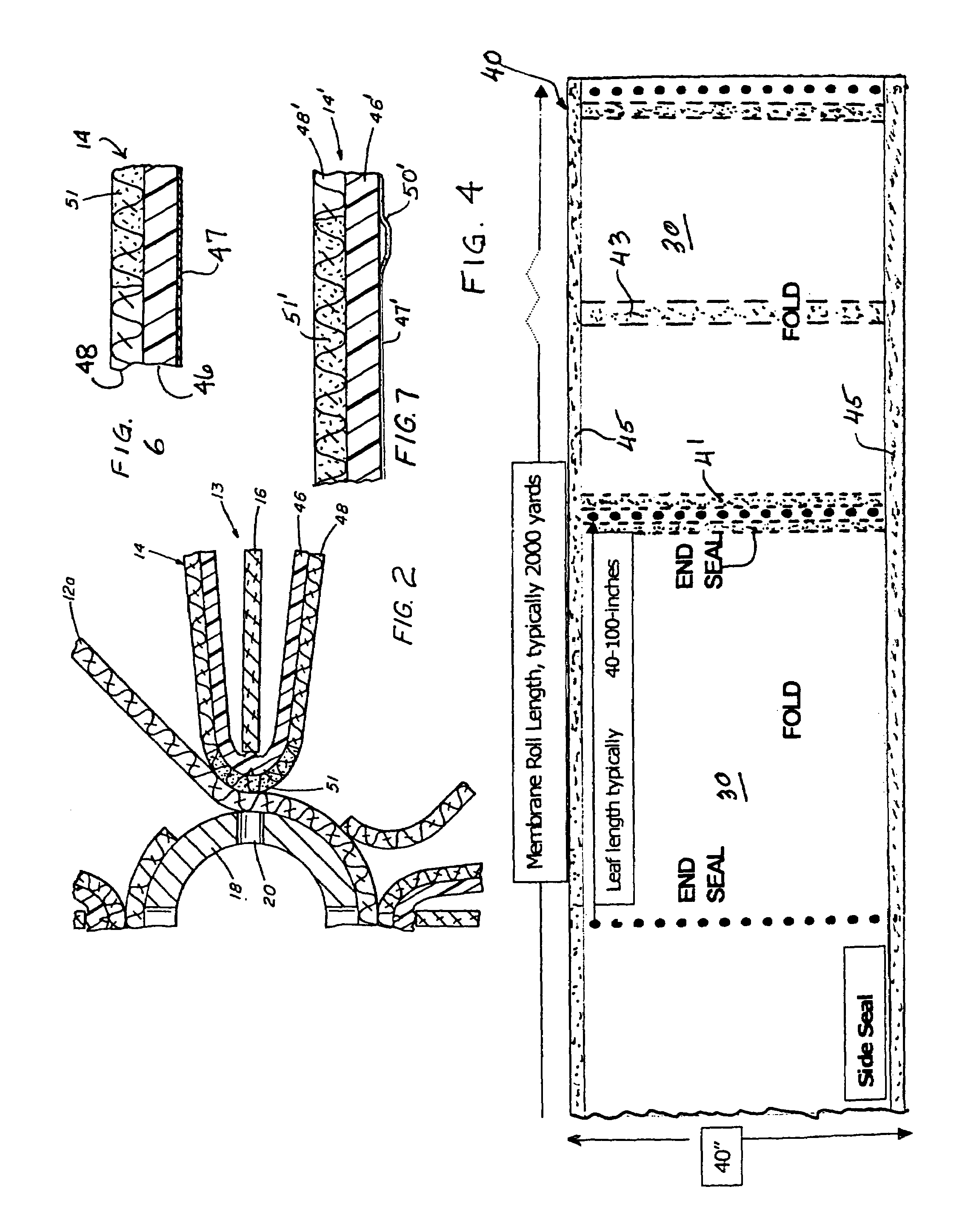Blister protection for spiral wound elements
a technology of spiral wounds and protective layers, applied in the direction of reverse osmosis, mechanical equipment, synthetic resin layered products, etc., can solve the problems of unsanitary spot where bacteria can be harbored, composite sheet materials that are not easily contaminated, and have experienced occasional difficulties, so as to prevent osmotic blistering and prevent osmotic blistering. , the effect of inherently resistant to osmotic blistering
- Summary
- Abstract
- Description
- Claims
- Application Information
AI Technical Summary
Benefits of technology
Problems solved by technology
Method used
Image
Examples
Embodiment Construction
[0019]It is often the case that spirally-wound semipermeable membrane elements may be subjected to relatively harsh cleaning conditions as often as twice a day in the dairy and some food processing industries to assure cleanliness and sanitation. Consistent with maintaining such standards, these installations, including the separation elements, are frequently inspected by the FDA inspectors who are alert to potential deficiencies that might be created in the elements, such as osmotic blistering of membranes. Detection of osmotic blistering will likely cause the certification of the product to be lowered to one suitable for animal feed only and, as such, needs to be avoided. As a result, the desirability of alleviating such potential problems became evident at an early date, and the present invention represents a surprisingly straightforward solution to this problem.
[0020]Very generally, the well known spirally-wound cross flow membrane element includes a wrapping of multiple groups ...
PUM
| Property | Measurement | Unit |
|---|---|---|
| width | aaaaa | aaaaa |
| width | aaaaa | aaaaa |
| length | aaaaa | aaaaa |
Abstract
Description
Claims
Application Information
 Login to View More
Login to View More - R&D
- Intellectual Property
- Life Sciences
- Materials
- Tech Scout
- Unparalleled Data Quality
- Higher Quality Content
- 60% Fewer Hallucinations
Browse by: Latest US Patents, China's latest patents, Technical Efficacy Thesaurus, Application Domain, Technology Topic, Popular Technical Reports.
© 2025 PatSnap. All rights reserved.Legal|Privacy policy|Modern Slavery Act Transparency Statement|Sitemap|About US| Contact US: help@patsnap.com



